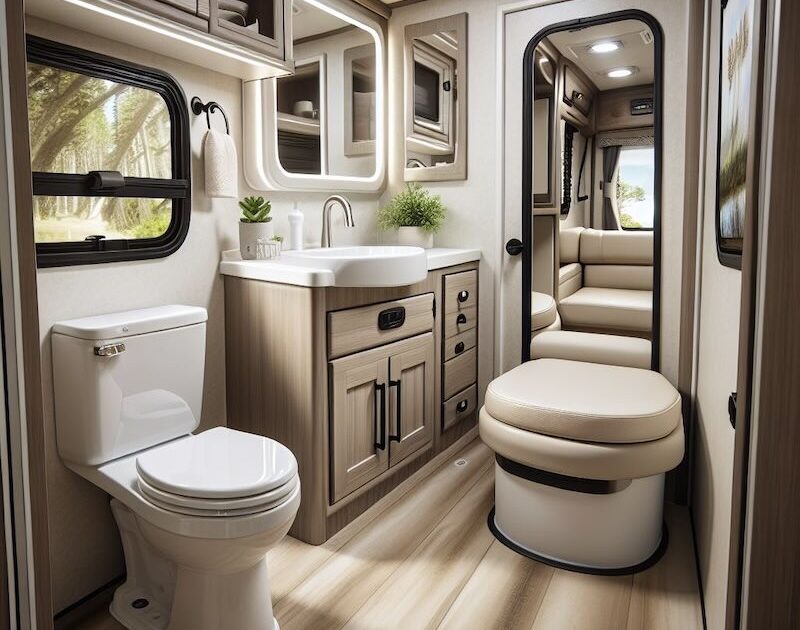RV toilets are designed to function efficiently in a compact space while using minimal water. Understanding how they work can help you maintain them properly and ensure a comfortable experience on the road. Here’s a breakdown of the key components and functioning of RV toilets.
1. Types of RV Toilets
- Gravity Flush Toilets: These work similarly to traditional toilets. They rely on gravity to move waste from the toilet bowl into the black water tank.
- Macerating Toilets: These use a grinder to chop waste into smaller pieces before pumping it into the black water tank, making them ideal for installations where space is limited.
2. Key Components
- Toilet Bowl: The part where waste is deposited. RV toilet bowls are usually made of lightweight materials.
- Flushing Mechanism: This can be a foot pedal or a hand lever, depending on the model. When activated, it releases water from the tank into the bowl.
- Water Supply: RV toilets connect to the RV’s fresh water system, using a water line to fill the bowl.
- Black Water Tank: This tank stores the waste until it’s ready to be emptied at a dump station.
3. Flushing Process
- Add Water: When you press the flush pedal or lever, water is released from the fresh water tank into the toilet bowl.
- Flush Waste: The added water helps push waste down into the black water tank through a pipe.
- Seal the Bowl: After flushing, the toilet bowl refills with a small amount of water to create a seal, preventing odors from escaping back into the RV.
4. Maintenance Tips
- Use RV-Safe Toilet Paper: Regular toilet paper can cause clogs. Use paper specifically designed for RV toilets.
- Add Treatments: Use enzyme-based treatments to break down waste and reduce odors in the black water tank.
- Regularly Empty the Tank: Monitor the tank levels and empty the black water tank at designated dump stations to prevent overflow or backup.
- Check for Leaks: Regularly inspect the connections and seals to ensure there are no leaks in the system.
5. Additional Considerations
- Ventilation: Ensure your RV has proper ventilation to reduce odors. Some RVs have vents connected to the black water tank.
- Winterization: During winter, it’s crucial to winterize your RV’s plumbing system, including the toilet, to prevent freezing and damage.
RV toilets are designed to be efficient and compact, making them suitable for life on the road. Understanding their operation and maintenance can enhance your RV experience and ensure a clean, odor-free environment. If you have more questions about RV toilets or need assistance, Custom-way is here to help.

